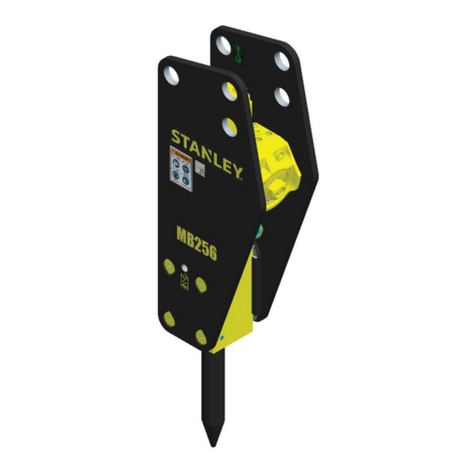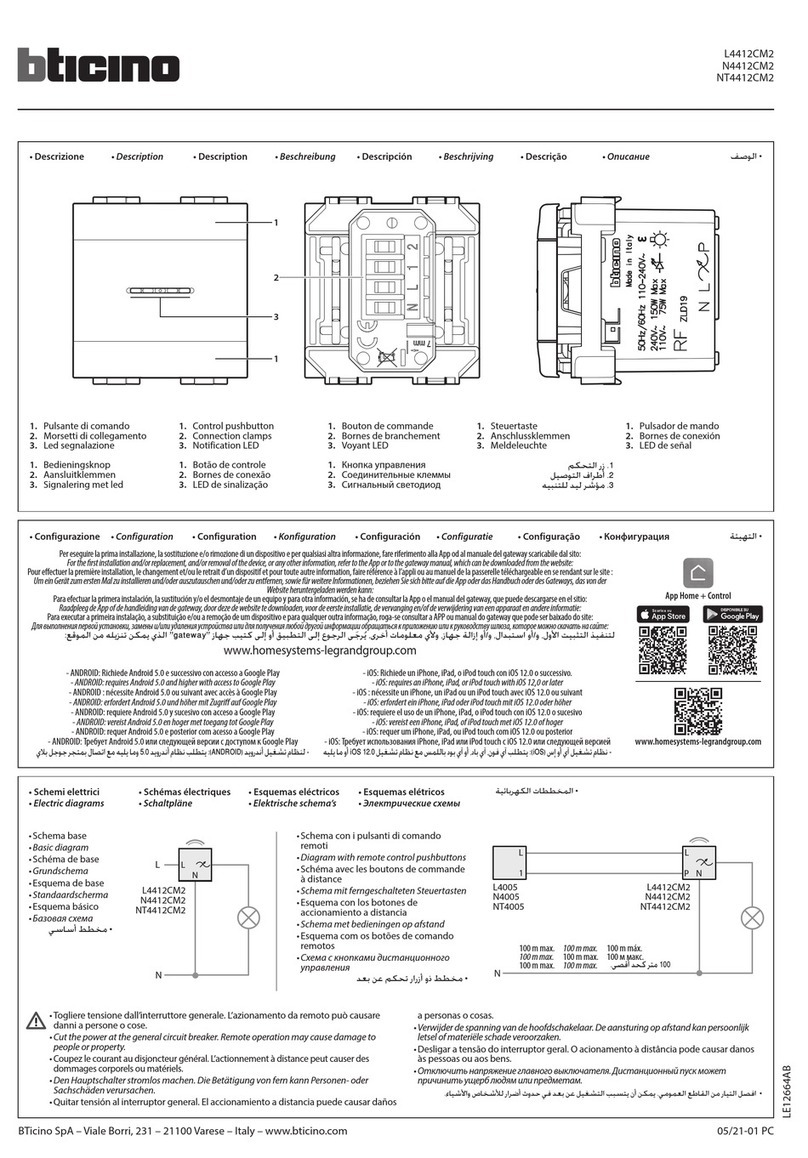
6 ► MB556 User Manual
Tool operators and maintenance personnel must comply
with the safety precautions given in this manual and on
the stickers and tags attached to the tool and hose.
These precautions are given for your safety. Review
them carefully before operating the tool and before
performing general maintenance or repairs.
Supervising personnel should develop additional
precautions relating to the specic work area and local
safety regulations. Place the added precautions in the
space provided in this manual.
The MB656 Mounted
Hydraulic Breaker
will provide safe and
dependable service if
operated in accordance
with the instructions given
in this manual. Read and
understand this manual
and any stickers and tags
attached to the tool and
hoses before operation.
Failure to do so could
result in personal injury or
equipment damage.
Check the rules and regulations at your location. The
rules might include an employer’s work safety program.
Regulations may identify hazards such as working
around utility supply lines or hazardous slopes.
BE THOROUGHLY TRAINED BEFORE
OPERATING THE UNIT ALONE
• Operator training must start in an area without
bystanders and use all the controls until they can
control the machine fully under the conditions of the
work area.
• When learning to operate a machine, do so at a slow
pace.
KNOW THE WORK CONDITIONS
• The operator must know any prohibited uses or
work areas for the machine. For example, excessive
slopes and poor or dangerous terrain conditions
must be avoided.
OBEY SAFETY RULES
• Operate the breaker in accordance with all laws and
regulations which aect you, your equipment and
the worksite.
• Do not operate the breaker until you have read
this manual and thoroughly understand all safety,
operation and maintenance instructions.
• The operator must be familiar with all prohibited work
areas such as excessive slopes and dangerous
terrain conditions.
• Do not operate the breaker until you read the carrier
equipment manual and thoroughly understand all
safety, operation and maintenance instructions.
The word “carrier”, as used in this manual, means a
backhoe or excavator or similar equipment used to
operate the breaker.
• Ensure that all maintenance procedures
recommended in this manual are completed before
using the equipment.
• The operator must not operate the breaker or carrier
if any people are within the area where they may
be injured by ying debris or movement of the
equipment.
• Know the limits of your equipment.
• Establish a training program for all operators to
ensure safe operation.
• Warning: Use of this tool on certain materials could
generate dust potentially containing a variety of
hazardous substances such as asbestos, silica or
lead. Inhalation of dust containing these or other
hazardous substances could result in serious
injury, cancer or death. Protect yourself and those
around you. Research and understand the materials
you are cutting. Follow correct safety procedures
and comply with all applicable national, state or
provisional health and safety regulations relating to
them, including, if appropriate arranging for the safe
disposal of the materials by a qualied person.
• Do not operate the tool unless thoroughly trained or
under the supervision of an instructor.
• Become familiar with the carrier controls before
operating the carrier and the breaker.
• When operating the breaker you must use ear
protection, eye protection and breathing protection.
• While learning to operate the breaker and carrier, do
so at a slow pace. If necessary, set the carrier mode
selector to the slow position.
• Make sure all controls (levers and pedals) are in the
NEUTRAL position before starting the carrier.
• While operating the breaker and carrier, keep hands
and feet on the controls at all times.
• Before leaving the carrier, always lower the boom
and insure the carrier is stable. Never leave the
machine with the engine running.ALWAYS ENGAGE
THE PARKING BRAKE.
SAFETY PRECAUTIONS




























